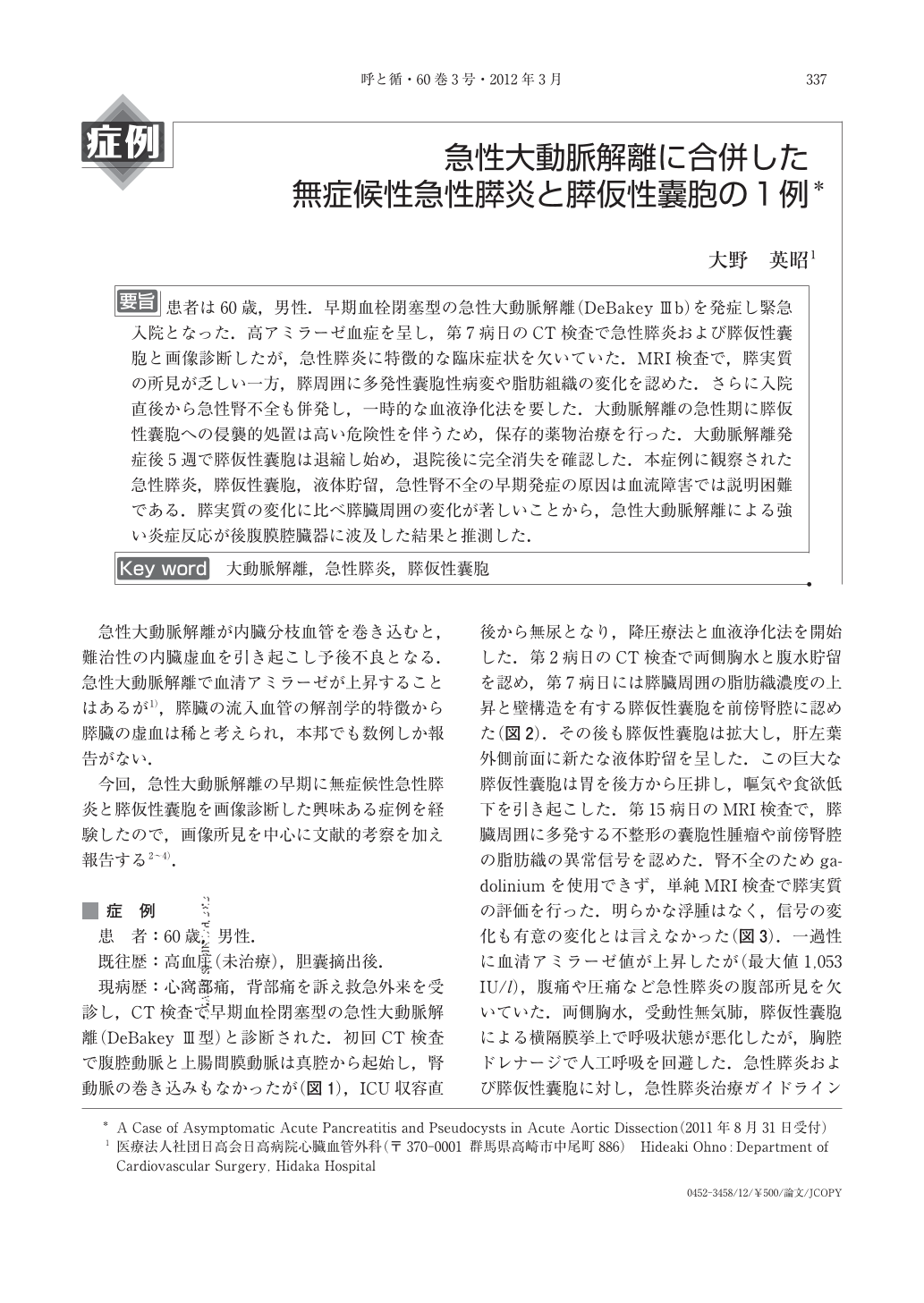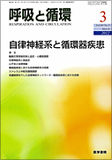Japanese
English
- 有料閲覧
- Abstract 文献概要
- 1ページ目 Look Inside
- 参考文献 Reference
要旨 患者は60歳,男性.早期血栓閉塞型の急性大動脈解離(DeBakeyⅢb)を発症し緊急入院となった.高アミラーゼ血症を呈し,第7病日のCT検査で急性膵炎および膵仮性囊胞と画像診断したが,急性膵炎に特徴的な臨床症状を欠いていた.MRI検査で,膵実質の所見が乏しい一方,膵周囲に多発性囊胞性病変や脂肪組織の変化を認めた.さらに入院直後から急性腎不全も併発し,一時的な血液浄化法を要した.大動脈解離の急性期に膵仮性囊胞への侵襲的処置は高い危険性を伴うため,保存的薬物治療を行った.大動脈解離発症後5週で膵仮性囊胞は退縮し始め,退院後に完全消失を確認した.本症例に観察された急性膵炎,膵仮性囊胞,液体貯留,急性腎不全の早期発症の原因は血流障害では説明困難である.膵実質の変化に比べ膵臓周囲の変化が著しいことから,急性大動脈解離による強い炎症反応が後腹膜腔臓器に波及した結果と推測した.
A 60-year-old man was admitted to our hospital with thrombosed-type acute aortic dissection (DeBakey type Ⅲ). No clinical signs specific for acute pancreatitis were observed, despite the presence of hyperamylasemia and CT findings of acute pancreatitis and pseudocysts. MRI showed peripancreatic cystic lesions and an abnormal signal of fatty tissue in the anterior pararenal space without parenchymal change in the pancreas. Anuria occurred immediately after hospital admission, requiring temporary hemodialysis. Conservative treatment for the pseudocysts was used to avoid a high-risk invasive procedure in the acute phase of aortic dissection. Five weeks after the onset of aortic dissection the pseudocysts began to regress and complete resolution was recognized on CT scan after discharge. A more remarkable change of peripancreatic tissues was noted, compared to those of pancreatic parenchyma. This case suggests that severe inflammation due to aortic dissection may affect the retroperitoneal organs.

Copyright © 2012, Igaku-Shoin Ltd. All rights reserved.


